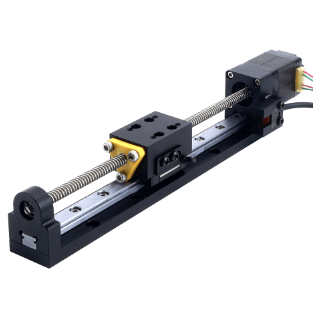The structural differences are:
A linear motor is a mechanical device that converts rotational motion into linear motion. From the perspective of motion principles, to convert a stepper motor from rotational motion to linear motion, the simplest design is to integrate the screw nut into the stepper motor, and realize the entire linear transformation inside the motor. This method greatly simplifies the entire structural design, and in many application fields can directly use linear motors for precise linear transmission without installing external mechanical linkage devices. The basic principle is to install a nut in the center of the rotor of the linear motor, and accordingly use a screw rod to mesh with the nut. In order to move the screw rod forward and backward, some method must be used to prevent the screw rod and the rotor assembly from rotating together. Since the rotation of the screw is constrained, the screw achieves linear motion when the rotor rotates.

Linear Motor Actuators usually consist of linear guide rails, aluminum alloy profiles, supports, motors, photoelectric switches, etc. It is a transmission device that directly converts electrical energy into linear motion mechanical energy without any intermediate conversion mechanism. It has the advantages of simple structure, convenient long stroke, high acceleration, fast response and high precision. The linear actuators currently on the market can be roughly divided into two categories: synchronous belt type linear modules and ball screw linear modules. The former installs the belt on the transmission shafts on both sides of the linear module, which serves as the power input shaft. A slide block for adding equipment workpieces is fixed on the belt. When there is input, the slide block is moved by driving the belt; the latter The motor drives the screw to make the slider run. Our company is currently selling this type, but the structure is simpler. We have canceled the coupling and integrated the linear motor into the module as a whole. Please explain whether the actuators has a coupling or not.

The performance difference is:
Linear Actuators usually include the linear motor itself and its supporting control system, sensors and mechanical structure. This integrated design allows linear motor modules to be deployed faster and easier t
Discussions
Become a Hackaday.io Member
Create an account to leave a comment. Already have an account? Log In.